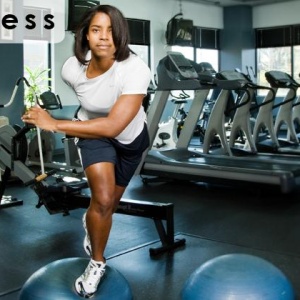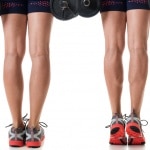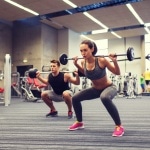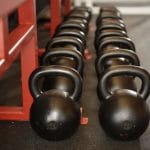 December 2021
December 2021
Resistance Training That’s Good for the Heart
Resistance training (RT: weightlifting) has been recognized as an important component of a general exercise and wellness program for over 30 years now. The current federal guidelines for physical activity (Physical Activity Guidelines for Americans) recommend 2-3 days/wk of muscle-strengthening exercise for nearly everybody. Long recognized for its ability to build muscle and bone, it more recently has been a major component of balance training and neuromuscular training to prevent and treat injury. More data is recognizing its value for the cardiovascular system, too.
While acute, intense bouts of any exercise stress the heart and, in the wrong person with the right conditions, could over-stress it to the point of inducing a cardiac event, for the most part, regular exercise – RT and cardio – helps reduce the risk of this. One mechanism by which this happens is by “reduc[ing] the potential to create a blood clot and increase the capacity to dissolve a clot once it forms.” We know cardio does this well, but how about RT?
A Ball State (IN) study had 16 healthy young adults participate in a 3/wk whole-body RT program for 8 weeks designed to build strength. The results show a “significant training-induced reduction in plasminogen activator inhibitor-1 (PAI-1)…which dissolves blood clots.” This enhanced capacity to dissolve blood clots suggests “that eight weeks of resistance training reduces the risk of thrombotic events in healthy adults.” The mechanisms are unknown but the message is clear: lifting weights is good for all your muscles, the heart included.
MSSE Nov. 2021
You Can’t Beat Your Anatomy, Sometimes
In the past, we’ve highlighted the critical role of the hip abductors (especially the gluteus medius) which help stabilize the knee as your foot hits the ground. See here, here, here, and here. These muscles control the inward rotation and adduction (angling toward the midline) of the thigh bone (femur) which, if chronic and excessive, contribute to all kinds of problems from non-contact anterior cruciate ligament (ACL) tears in some athletes to patellofemoral conditions such as ITB (iliotibial band), even ankle sprains. These conditions seem to hit female athletes more than males. A group of researchers at USC (Southern Cal) wanted to see if bone morphology – shape and positioning/angulation – contributed to the motion of the thigh as runners’ feet hit the ground. See here, here, and here to get a sense of what the leg/hip does upon making ground contact.
A cohort of mid-20 yr/old runners (15 females, 14 males) was filmed while running after CT scans of their pelves and femurs were assessed for “bilateral hip width to femur length ratio, acetabulum abduction, acetabulum anteversion, femoral anteversion, and femoral neck-shaft angles.”
They found that “women exhibited significantly greater peak hip adduction during both late swing and stance phases of running.” They also had lower gluteus medius strength, “greater femoral neck-shaft angles…and greater hip width to femur length ratios than men.” However, the only significant predictor of hip adduction during gait was femoral anteversion (inward twisting that creates a knock-knee or pigeon-toe gait pattern.) Hence the conclusion that it’s difficult to assess “behavior during complex motor tasks using simple measures of muscle performance and skeletal structure.” Essentially, you can’t beat your anatomy.
MSSE Nov. 2021
Tid Bits
Diet to lose weight, exercise to keep it off. A study in Obesity (6/21) followed 4305 people who’d kept off at least 20# for more than 3 years. Compared to a control group of 619 obese individuals who maintained their weight, the “weight-loss maintainers sat less than three hours per day,” burned twice the weekly calories and reported thrice the number of calories/wk in moderate-to-vigorous physical activity. So sit less, move more.
Cleveland Clinic Men’s Health Aug. 2021
Gut microbiome – the bacteria each of us has in our intestines – is all the rage, for health and weight matters. A study of over 1400 people in the Netherlands self-reported on their diets…and had their bacteria assessed. Almost half had some sort of digestive disorder (IBS, IBD) which allowed the researchers to compare ‘healthy’ gut microbes against ‘unhealthy’ ones. As you might have guessed, those who ate more processed foods, animal products, sugars and fast food had “consistently…more “bad” bacteria” which produce more “endotoxins that damage the gut’s mucus layer.” So you are what you eat. Tufts Health & Nutrition Letter, July 2021
They’re everywhere – technologies that read your mind and your body. Though ubiquitous, they’re not necessarily demonic. In fact, a March 2021 review in the British Journal of Sports Medicine found that smartwatches or bracelets that “track steps, speed, and calories burned” can really help overweight or obese people with a weight loss plan. The review of 31 studies compositing the data of over 2200 people found that wearing a fitness tracker for 12 weeks or more helped them set and meet weekly goals of steps taken or minutes of activity. Those who wore research-grade trackers lost the most weight (avg. 10#) while those who wore commercial ones lost, on average, 6#. Those who didn’t wear one didn’t lose much weight at all. Harvard Health Letter July 2021

 December 2021
December 2021














